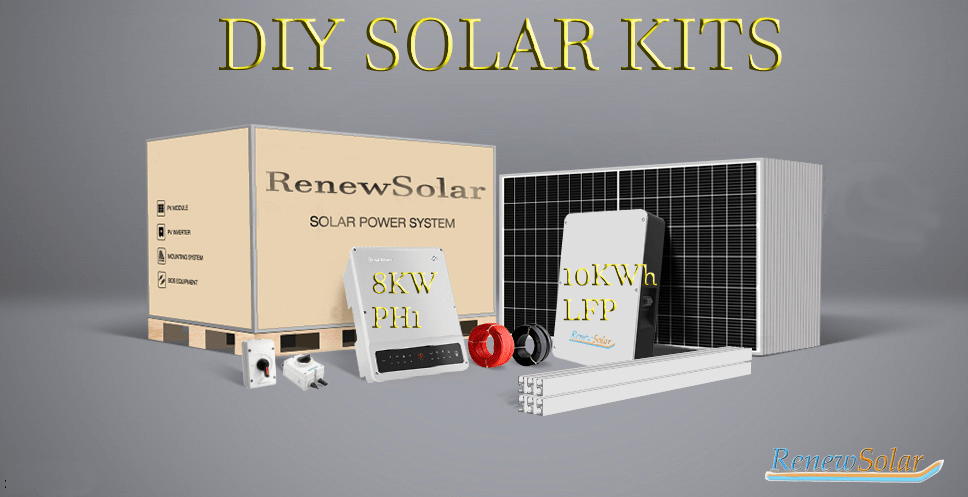Primary related article : https://www.renewsolar.co.uk/solar-panels/decoding-solar-price-vs-value-a-consumers-guide/
If you have a daily power use of just 7kwh, The kit allows for your installation to return your investment to £0.00 in four years with only the savings you would have paid for grid power at £0.245kwh.
How the numbers work:
- Daily use: 7 kWh
- Annual use: 7 kWh/day * 365 days/year = 2555 kWh
- Annual cost from grid: 2555 kWh * £0.245/kWh = £625.98
- 4-year cost from grid: £625.98/year * 4 years = £2503.92
This means that if you spend £2503.92 on a solar system, it would theoretically pay for itself in 4 years through the savings on your electricity bill.
Important Notes:
Real-world Savings: The calculation assumes you use all the solar power you generate. In reality, you might:
Use less: Sell excess energy back to the grid (if your provider allows).
Use more: Still need some grid power on cloudy days or at night.
Building the system – The details.
It’s tricky to give exact numbers for solar sun hours in the UK, as it varies a lot by location and even year to year! But here’s a general idea:
Think of it in terms of “peak sun hours”
This is essentially the number of hours per day when the sun’s intensity is at its strongest (around 1000 watts per square meter). It’s not just about daylight, but the strength of the sun.
General UK Trends:
Winter: This is the challenging time. Peak sun hours can drop to 1-2 or even less. Cloudy days are more frequent, and the sun is lower in the sky.
Summer: This is your best time! You can expect 5-7 peak sun hours on average, with some days exceeding that. June and July are usually the sunniest months.
Spring: Things are improving! You’ll likely see 3-5 peak sun hours as the days get longer and the sun gets stronger.
For the purpose of solar installation we like to use 4 hours as a average over the year, this would mean that to produce 7kwh of solar per day, you would need just 1.75kw of solar panels to make the array.
As this is a fairly small array with modern solar panels, you could also add to this to reduce the winter burden. therefore 3.5kw of solar would allow you to maximize the solar yield.
While we adjust for winter, your output on a summer day would reach in excess of 15kwh per day – Therefore your export payment can be factored in if you so wish.
Battery Storage: More Than Just a Battery
Battery storage in a solar system isn’t just about having a battery; it’s about managing your energy. The battery acts as a buffer, seamlessly supplementing the solar panels when clouds pass or when your home’s energy demand exceeds what the panels are producing at that moment. This ensures a consistent and reliable power supply.
LFP Batteries: A Safe and Long-Lasting Choice
We utilize Lithium Iron Phosphate (LFP) batteries for our solar storage solutions. LFP batteries offer significant advantages over traditional lithium-ion batteries: they are safer, have a longer lifespan, and are more environmentally friendly.
Maximizing Battery Lifespan
Our RenewSolar batteries are designed to last for approximately 6000 cycles, which translates to roughly 16 years. To ensure optimal performance and longevity, it’s important to maintain the batteries within a temperature range of 11°C to 30°C and avoid extreme temperature fluctuations. Sharing the load across multiple batteries and keeping them warm contributes to their health. Another key factor is the “C-rate,” which indicates how quickly the battery is being discharged. Lowering the C-rate by not fully discharging the batteries extends their lifespan by “reserving power.”
Recommended Setup:
For a 3.6kW inverter, we recommend using two batteries, providing a total storage capacity of 10.2kWh. This configuration helps distribute the load and further enhance battery lifespan and system reliability.
The Kit.
8 450w solar panels
Rail and mounting kit.
1 Sunsynk 3.68kw hybrid inverter.
2 5.12kwh battery packs (non budget)
1x PV cable
1x RCBO and enclosure
1 DC Isolator
1 AC isolator
£2,974
Switching to budget batteries would bring the costs down to £2,604 a £100 difference in the ROI target.
This does not include installation or selling power back to the grid and indeed the rise on power prices that will occur over the 4 year period. There is some tweaking that could reduce the costs slightly more, however the cost of installation is going to be a big factor in the ROI target. Check out our installation costs and services.

No responses yet